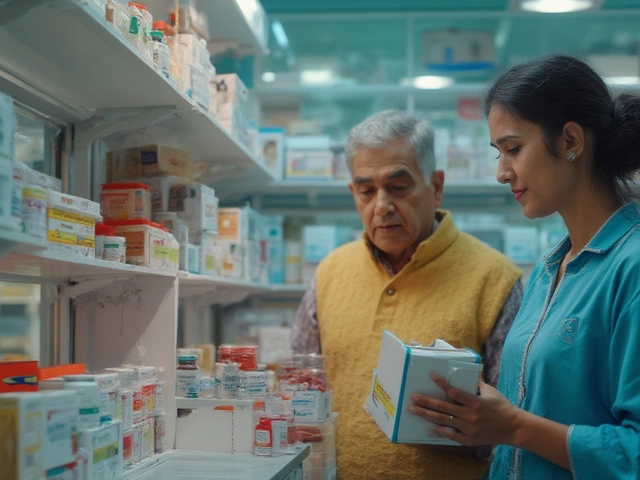Anxiety sneaks up on people. Depression can feel like a weighted blanket you just can't shrug off. Everyone talks about mental health these days, but nobody seems to know which of these challenging conditions is actually the easiest to recover from. Is there even such a thing as a 'most treatable' mental illness? You might be surprised that the answer is yes — and it might not be what you expect. Various studies and decades of medical experience point to certain mental illnesses being far more responsive to treatment than others. That means, with the right tools, support, and mindset, people really do bounce back. Grab a coffee, and if you're wondering about hope, you're in the right place.
What Does It Mean for a Mental Illness To Be 'Treatable'?
First, let's clear up a giant misconception. "Treatable" doesn't mean "curable" or that the issue magically disappears forever. In mental health, treatable means symptoms can be managed so well that they no longer seriously interfere with a person's everyday life. It's less about finding a permanent fix, and more about regaining control, feeling better, and living life with more ease — think of it like managing diabetes or asthma.
Treatability comes down to a few practical things. How effective are medications and therapies? How fast do people usually see improvements? How much do symptoms go away or reduce with good treatment? Also, we have to consider how widely available the right help is. Treatable doesn't just mean a condition reacts well to medicine — it means people have a real shot at a better life with treatment that's actually accessible.
So, which mental illnesses tick these boxes? Multiple studies and real-world data single out certain conditions. Experts consistently rank anxiety disorders — especially specific phobias and panic disorder — as the most treatable mental illness. In fact, with the right approach, as many as 80-90% of people see huge improvements or even full recovery. That's not wishful thinking. Cognitive-behavioral therapy (CBT), for example, is famous for its effectiveness with these issues. Short-term, targeted, and results-driven, CBT helps people rewire their brains away from distressing thoughts and feelings.
Depression is another contender, but it's a little trickier. While a lot of people recover from their first episode of major depression with treatment, there's a higher risk of relapse. Still, even long-term, many find their symptoms ease a lot with a mix of therapy, medicine, and lifestyle shifts. In contrast, conditions like schizophrenia or personality disorders tend to be much harder to manage and come with bigger challenges for treatment and recovery.
Anxiety Disorders: Champion of Treatability
If you were guessing depression or even ADHD, here's the shocker — it's most often the "classic" anxiety disorders, particularly specific phobias and panic disorder, that win the title for most treatable. How does that square with what it feels like inside the mind of someone who's panicking before a flight, or refusing to cross bridges, or facing a daily barrage of what-ifs?
Here's why anxiety disorders top the list. They respond rapidly to treatment, both therapy and — in many cases — medication. For specific phobias, exposure therapy is almost legendary. Here's how it works: a trained therapist helps a person face their fear in small steps, in a safe, controlled setting, until their mind realizes the dreaded thing isn't actually dangerous. Over time, anxious responses fade out. The stats don't lie — exposure therapy for phobias has success rates above 90% in some studies. Imagine someone who's been terrified of dogs for years, who after just a few months can happily visit friends who own one. That's a dramatic, practical change.
Panic disorder, another anxiety heavyweight, is also super responsive. With a blend of therapy and — sometimes — short-term medication, most people hit a huge improvement curve in a matter of weeks. CBT is the starting point. It tackles the cycle of panic and fear, teaching people not just to cope, but to stop the panic attacks from happening at all. Success rates often hover around 80-90% in clinical settings.
Here's something wild: generalized anxiety disorder (GAD) is a bit more stubborn, but still shows strong results with therapy. Cognitive-behavioral techniques dig into the roots of endless worry and challenge those negative predictions that seem to play on a loop. People who finish a course of CBT for GAD often report they're living freer, calmer lives. Add mindfulness, relaxation, and sometimes medication for stubborn cases, and it gets even better.
This isn't just theory or wishful statistics. Real people who stick with proven treatments for anxiety issues often walk away amazed by the speed and scale of change. Many say, "I can't believe I lived like that for so long," after a few months. That's the true mark of treatability in the mental health world.

Depression, Treatment, and the Power of Support
Let's be real: depression is a different beast. For some, it creeps in slowly, leaving them tired and unmotivated for weeks. For others, it hits like a truck, draining the color from daily life. But here's a bright spot — when caught early and treated well, depression has a high rate of recovery. Around 70-80% of people receiving adequate treatment for their first episode (using standard therapies and/or antidepressants) report marked improvement within a few months.
The best outcomes? They usually happen when treatment kicks off early and sticks for long enough. The go-to options are antidepressants like SSRIs (think: fluoxetine, sertraline), and CBT. Sometimes, both together work even better. Out of all the talking therapies, CBT and behavioral activation get a thumbs up from evidence. People learn to break out of negative patterns, set realistic goals, and gradually rebuild motivation. Newer therapies like mindfulness-based cognitive therapy also help prevent relapse.
But, here's the catch. Depression likes to come back. Around half of people who've had one episode will experience another, sometimes years later. That's why ongoing support is so vital. The good news? If someone's had treatment before, they're better equipped to spot warning signs and get help early the next time. Relapse-prevention strategies often center on lifestyle tweaks — keeping a steady sleep schedule, moving more, connecting to supportive people — and not ignoring those early warning signs.
There's also been a boom in digital help. Apps offer quick check-ins, online therapy lets people get help from home, and support forums can make a world of difference for those who feel too overwhelmed to leave the house. Some recent studies even suggest that guided online CBT, when done properly, works nearly as well as in-person sessions for many folks.
Diet and exercise show up in the science too. Exercise, especially brisk walking or cycling, is proven to lift mood and lower symptoms for mild to moderate depression. Omega-3s, found in oily fish and some seeds, seem to make a subtle but real difference. These aren't cures, but stacked with regular therapy, they make recovery tougher and relapse less likely.
Tips, Myths, and Useful Facts About Treatable Mental Illnesses
TV shows love to present therapy as endless talking about childhood woes, or medication as a one-pill-and-done fix. Reality is more practical — and a lot more hopeful.
- Treatment is rarely "one size fits all". Two people with the same diagnosis might need different combinations of therapy, medication, lifestyle changes, and support. The best mental health professionals are always open to tweaking the plan as things progress.
- Therapy can feel awkward — at first. It's normal to feel unsure or exposed in the early sessions. For many, results show up after a few weeks, not instant magic. Sticking with it makes the difference.
- Self-help works best alongside professional care. Think of lifestyle changes — sleep hygiene, exercise, good food, cutting back on alcohol — as fuel for recovery, not full solutions. Apps, mindfulness, and journaling all have real benefits but rarely replace therapy.
- Medication helps, but it isn't forever for most people. For treatable conditions like anxiety or one-off depression, many start meds, get better, and then taper off under a doctor's eye. It’s about building momentum so you can rebuild strength with therapy.
- Finding the right therapist is as crucial as finding the right treatment. Someone you trust, who really listens, can turbocharge progress. Don’t be afraid to shop around if something feels "off." It's your life.
So, what's not treatable? Persistent, severe mental illnesses that start early (like schizophrenia) or certain personality disorders often require much longer care, sometimes life-long. But even here, symptom management can dramatically improve quality of life. What we've learned from decades of mental health work is this — hope is not a myth. With the right approach, plenty of conditions once thought untouchable are now seen as treatable, giving people their lives back.
Want a clear view of how treatable some key mental illnesses are? Check this data snapshot from a leading UK study:
| Mental Illness | Primary Treatment | Average Response Rate | Typical Recovery/Life Impact |
|---|---|---|---|
| Specific Phobias | Exposure Therapy | 85-90% | Usually full recovery, often within months |
| Panic Disorder | CBT, Medication (SSRIs) | 75-90% | Majority regain normal function |
| Major Depression (First Episode) | CBT, Medication, Lifestyle Change | 70-80% | Largely recover but some risk of relapse |
| Obsessive-Compulsive Disorder | CBT (ERP), Medication | 60-70% | Significant but partial symptom reduction |
| Bipolar Disorder | Mood Stabilizers, Psychoeducation | 50-65% | Can manage but chronic relapse risk |
So if you're weighing which mental illness is the most treatable? It comes down to the right match of problem and treatment — and anxiety disorders, especially phobias and panic, reliably top the list. But no matter the diagnosis, the landscape for recovery has never looked brighter. People really do heal. Stick with it, get the help you need, and never underestimate what a few months of good care can do for your life. That's the real answer hiding behind the headlines.





